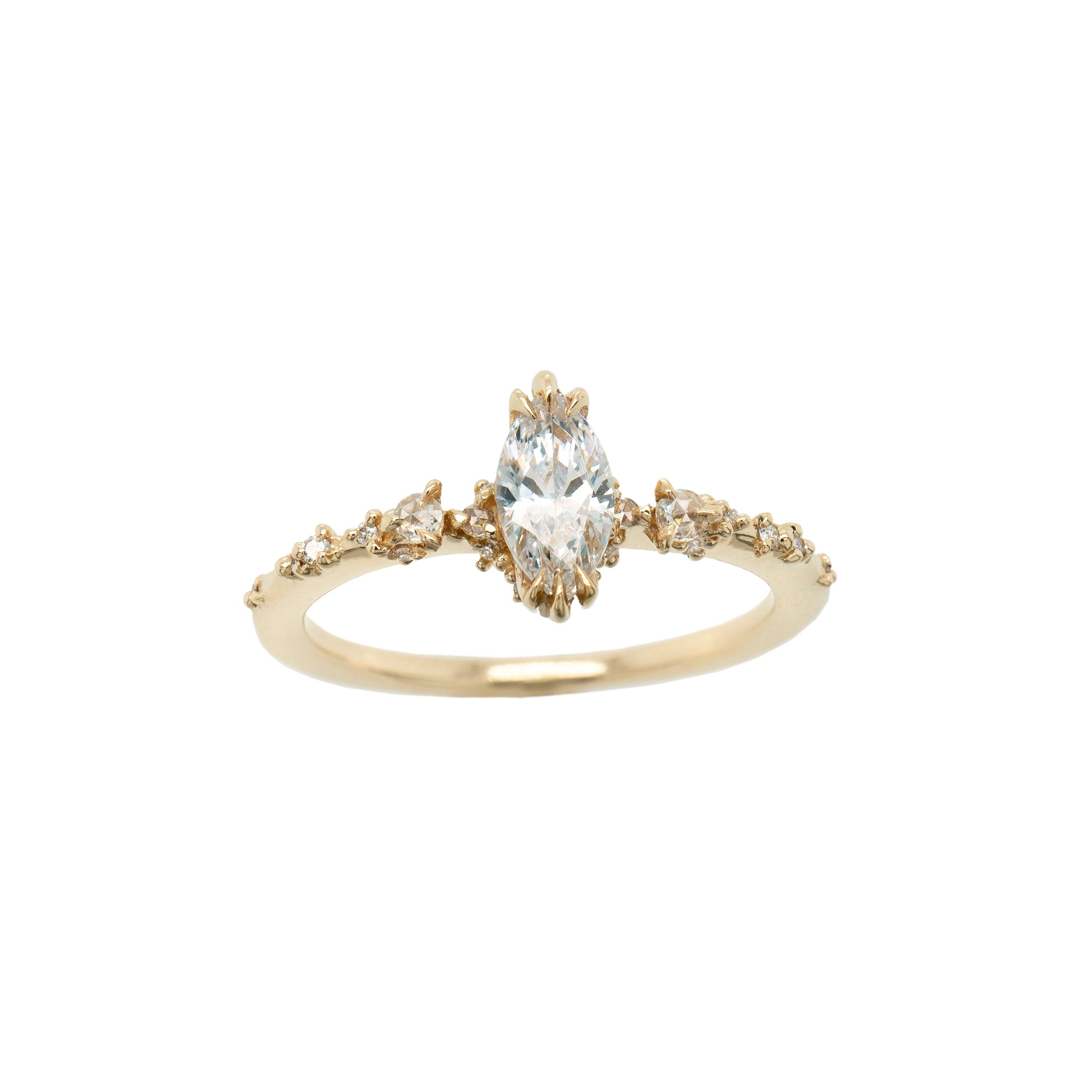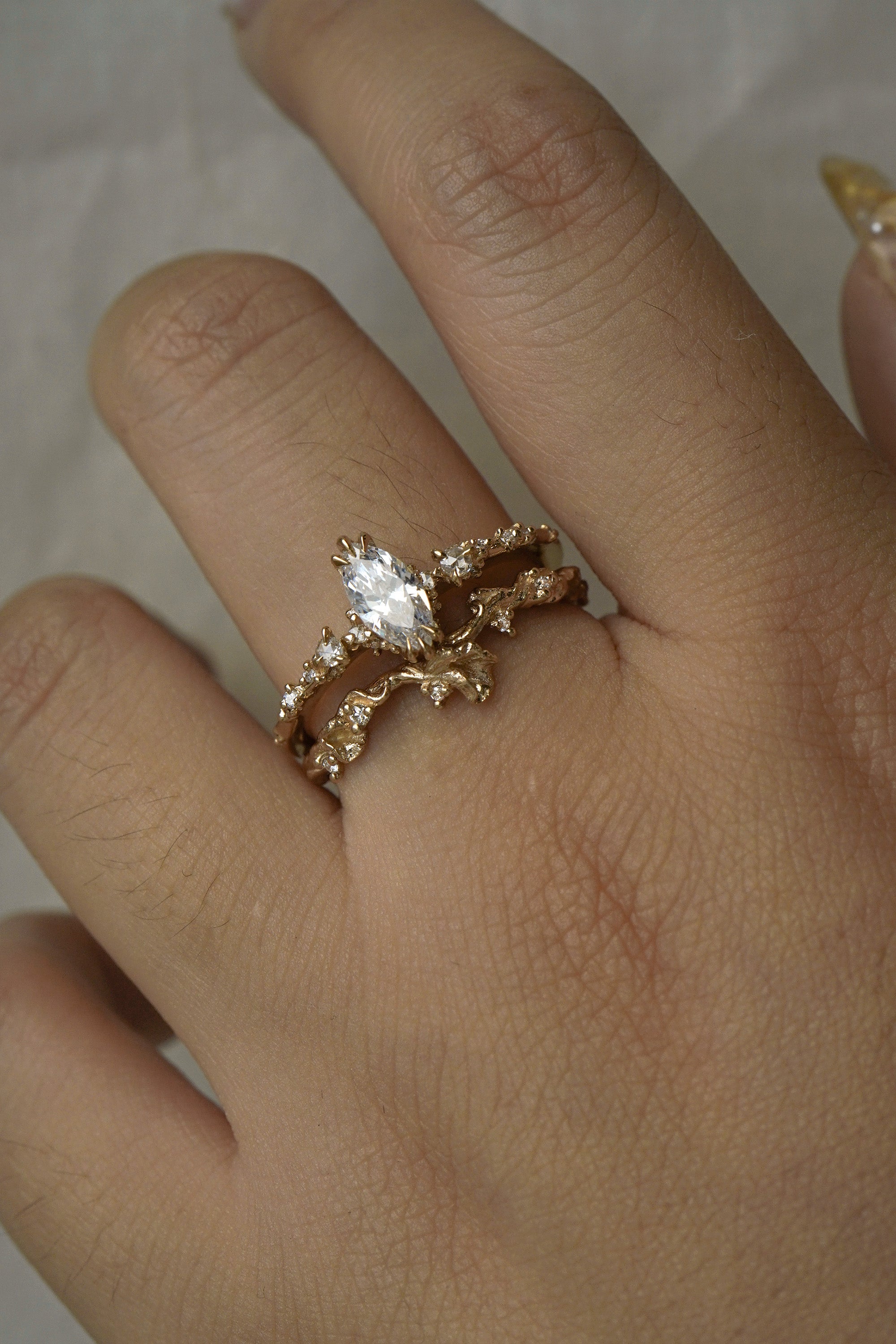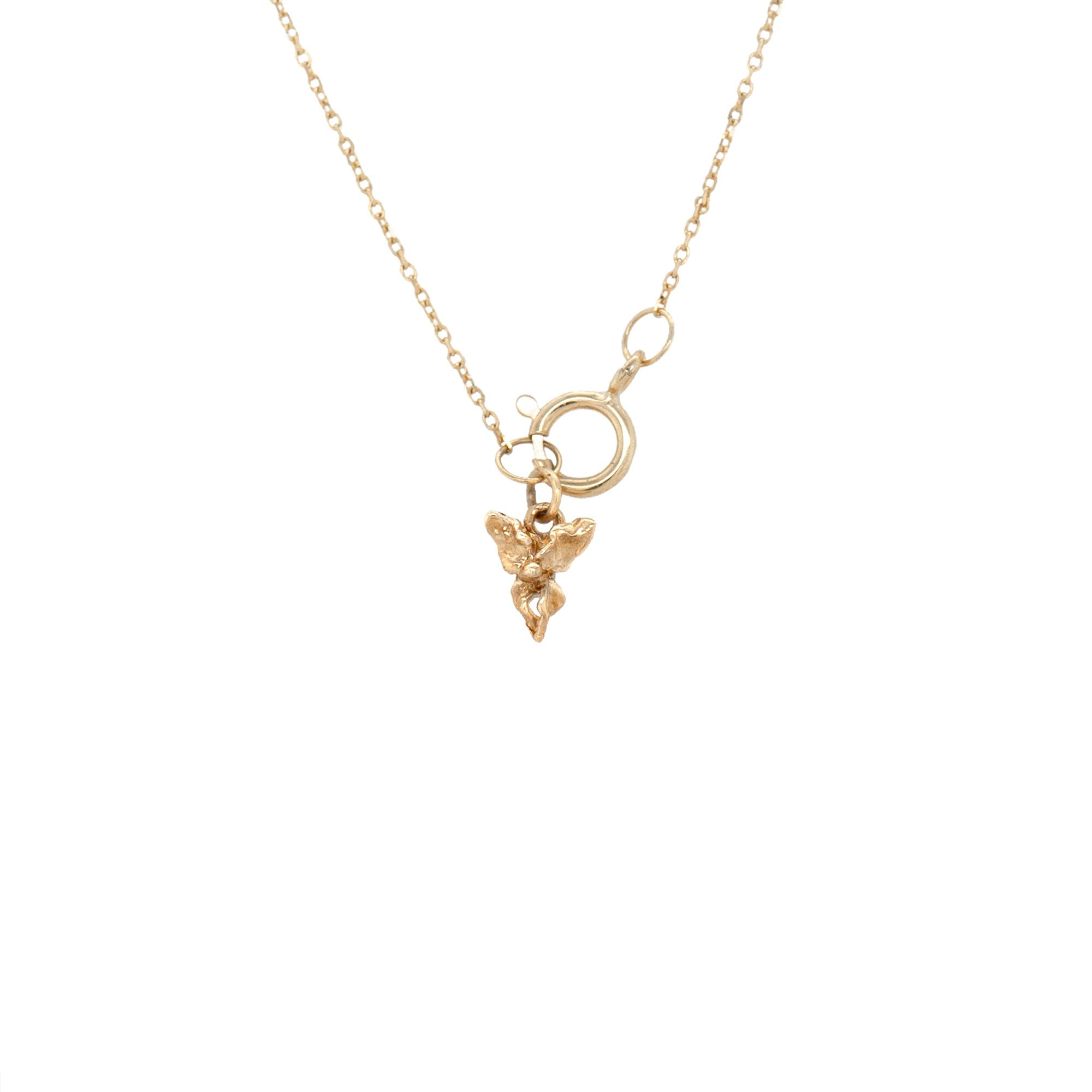Ring Size Chart
The following is a reference table for our ring sizes. Advice for how to figure out your ring size and how to buy a ring as a gift are below the table.
This chart is intended to help convert between North American (which we use) and international ring sizes. International sizes are provided as reference only, and may not be consistent between designers! If you use a different ring sizing system, we strongly recommend measuring the interior diameter of your ring and using that to figure out the closest US size to use for ordering on our website.
We guarantee to make the size that is ordered in US/Canadian sizing, but we are not responsible for conversions or fit. Please read the chart carefully and the tips below to find the best size. (Note that certain styles like the Evening Fleur rings fit differently than the standard sizes due to the way that they are carved; refer to the description and size names for more information in such cases.)
If you require a version of the ring size conversion chart that is compatible with screen readers, visit this page.



Choosing the correct size
There are many factors that can impact your ring size, that should be taken into consideration when ordering and when you're having your finger sized.
Band Width
The wider a band is, the smaller it will fit. This is because it takes up more space on the finger. The opposite is also true; a thinner band will feel larger.
If you wear a 2mm wide ring in a size 6 and find that it fits perfectly, a 5mm wide ring in a size 6 might feel too tight. In this case, a better size for the 5mm band might be a 6.5. On the other hand, if you have a 5mm wide band in a size 6 that fits perfectly, you might find that a 2mm band in a size 6 feels a bit loose. You could order the 2mm band in a size 5.5 for a more snug fit. (These estimates are not necessarily accurate and will vary from person to person -- it's best to refer to a ring as similar in width to the one you want to buy for accurate sizing).
Most of our bands are between 1.5 - 2mm wide, and so if you are using a wider band as a size reference or you are having your finger sized with sizers that are wider, you might find that your ring from us feels a bit big. Similarly, if you've ordered rings from us before, and order your usual size in a band that's 5mm wide, you might find that that ring feels tight!
Ideally, you would get your finger sized with a ring sizer that is as close in width to the ring you want to order, to get the most accurate size.
Temperature and Lifestyle
Temperature and activity can both impact your ring size. Your fingers can shrink in the cold, and swell in the heat. For this reason, it's best to size your finger when you've been in a comfortable, room temperature environment for an hour or more.
There are various lifestyle factors that can impact ring size as well. Salt, alchohol, hormones, flying in a plane, and lack of sleep can all cause fingers to swell. Exercise and activity (even simply going for a walk) can also cause fingers to swell.
Life changes, as well, can cause changes in finger size. Pregnancy often permanently changes a person's finger size, so if you were sized a few years ago and have since had a child, you may want to get resized!
Try to take these various factors into account when having your finger sized to make sure you are getting an accurate reading. For most people, the amount their fingers shrink or swell will vary, and will not be a significant enough difference to require a different ring size -- though you may find that putting on and taking off your rings may be more difficult on some days than others.
Unless your ring is very loose or very tight, we usually recommend that you try wearing it for an extended period (a few months at least, ideally in both hot and cold seasons) before having it resized for a minor adjustment (like a quarter or half size), to make sure that you consistently need a different size and your hands are not just responding to a temporary circumstance and will go back to normal later.
Large knuckles
If your knuckles are larger than where your ring sits, you might need a larger size in order to get the ring over the knuckle, but once you put the ring on, it might feel loose at the base of the finger and spin.
You cannot change the size of your knuckles, so you will have to order a ring size that can go over your knuckles comfortably. We can, however, add sizing beads to the ring. You will be able to get the ring on with a bit of wiggling, and the beads inside the band will help hold it in place at the base of your finger. Though sizing beads are removable if it isn't the right fit, we generally do not recommend adding sizing beads unless they are necessary; if you think you require sizing beads in your ring, please email us before ordering.
Finding your ring size
For best results, you should measure your ring size 3-4 times over different days to ensure that you have a consistent reading. Do not measure your finger early in the morning -- late afternoon or evening is best, since your fingers will be warm.
Your ring size should be comfortable. It should be snug enough that it won't fall off, but loose enough that it can be pulled over the knuckle with some resistance.
If you already have a ring that fits the correct finger
If you already have a ring that fits the finger you want to wear your new ring on, and it is a similar width to the ring you want to order, you can measure the internal diameter of the ring and refer to our size chart above to see which ring size you should order.
You can do this by carefully laying the ring over a ruler and measuring it. We don't recommend tracing the inside of the ring onto a piece of paper and then measuring the circle because the pencil/pen can get in the way and cause the tracing to be inaccurate.
If you can, you can also take your ring to a fine jewellery store, and they should be able to put it onto a ring mandrel to find out what size it is.
If you don't have a ring to refer to
We will always recommend, whenever possible, to have your finger sized at a fine jewellery store using ring sizers. Take note of the width of the ring sizers used; ideally you would not use a sizer wider than 2mm (unless you are planning on ordering one of our wider bands). If the sizers are wider, you may need to order a slightly smaller size than the reading you get from the sizers.
If you can't visit a fine jewellery store, you can cut out a strip of paper that's approximately the same width of the ring you want to order, and wrap it around your finger snugly (but not tightly). Mark where the paper overlaps, then lay the paper flat on a table and measure the length with a ruler. The length will be the interior circumference of the ring, which you can use to find the corresponding ring size in the chart above.
Do not use string for this -- string is too thin and can stretch, leading to inaccurate readings.
Buying a ring as a gift or a surprise
If you're trying to purchase a ring for someone without them knowing, it can be tricky to know which size to order without asking them.
Consider asking the recipient's friends or family members if they know the correct ring size. If they don't, they might be able to find out inconspicuously. A great way is to have a friend pretend that they want to go ring shopping for themselves, and to bring your recipient along with them -- when they're having their finger sized, they can encourage your recipient to get their finger sized as well, and then let you know the results!
If you have access to one of their rings that you know fits the correct finger, you can use the steps mentioned above to measure it.
Keep in mind that often even the same fingers on different hands have different sizes, so a ring that fits the ring finger on someone's right hand might not fit the ring finger on their left hand. Often, our dominant hand is slightly larger than our non-dominant hand.
If you have no idea whatsoever and no way of finding out otherwise, you can try to make an educated guess.
The most common ring sizes (for left hand ring fingers, where most Canadians and Americans wear their engagement ring) for female North American customers tend to be between 5 and 7. It is of course possible for a person's finger to be much smaller or much larger than that; weight, height, and build all contribute to finger size. We would usually recommend ordering a 6 or 7.
If you're ordering a one of a kind ring and you don't know what size you need, we recommend leaving it at the size it currently is rather than resizing it based on a guess. Once you're given the recipient the ring, you can then figure out if the ring needs to be resized together. While we can resize a ring more than once, it's best to avoid resizing the same ring repeatedly, as it can impact its structural integrity and the security of the settings.










